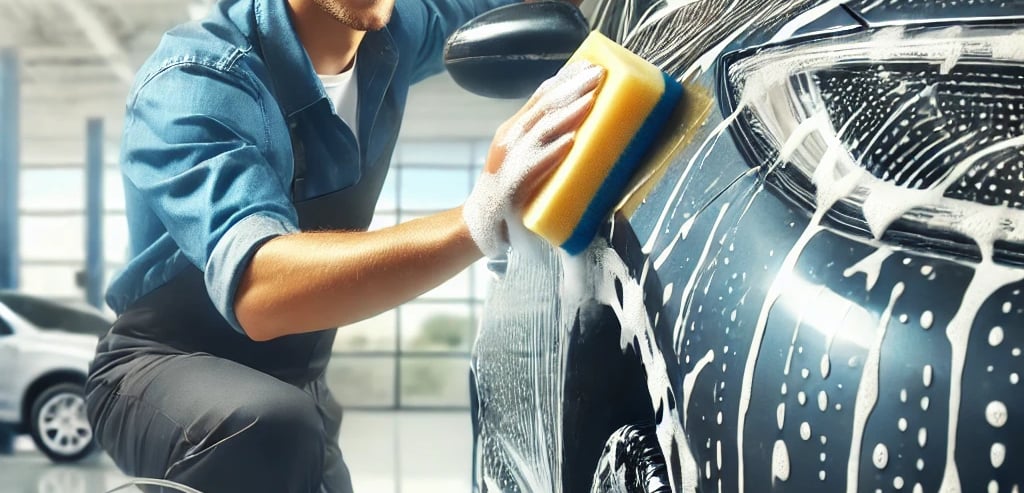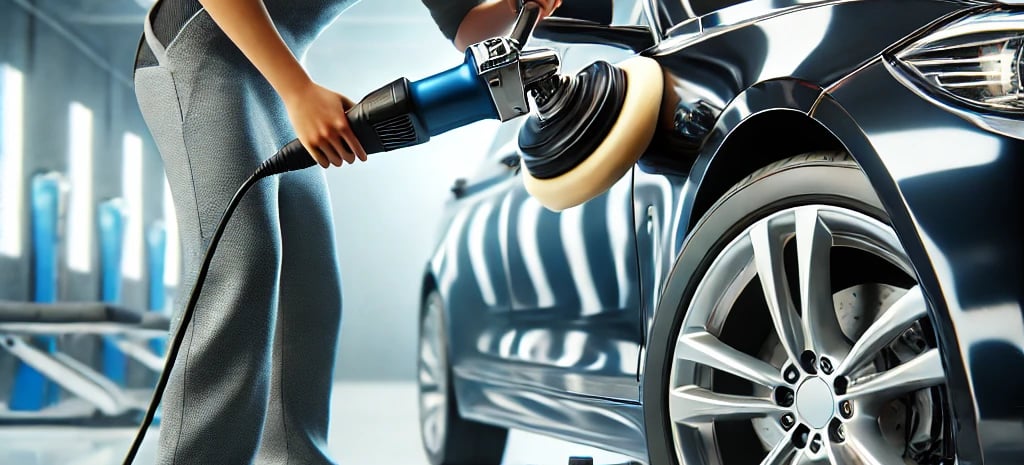Introduction
Your car's paint is not only a matter of aesthetics, but also essential protection against external elements that can damage it over time. Keeping your car's paint in good condition will not only make it look better, but it can also increase its resale value and prolong its lifespan. In this blog, we will explore various tips and tricks to keep your car's paint shiny and protected.
Tips and Tricks for Car Paint Care
How to Wash Your Car Properly
Washing your car properly is one of the most important steps to keep your car's paint in good condition. Many car owners make the mistake of washing their vehicles in direct sunlight or using inappropriate cleaning products, which can result in water spots, scratches, and paint wear. For proper washing, it is essential to use a specific car shampoo, soft sponges, and microfiber towels. Rinse the car first with a hose to remove loose dirt. Next, apply the shampoo with a sponge, washing the car from top to bottom to prevent dirt from the lower parts from scratching the upper parts. Rinse the car thoroughly and dry it with a microfiber towel to prevent water spots.
Protecting Paint with Wax and Sealants
Applying wax and sealants is an effective way to protect your car's paint. These products not only add extra shine, but they also create a protective layer that helps prevent damage from the sun, rain, bird droppings, and other contaminants. Wax should be applied regularly, at least every three months, to maintain its effectiveness. Sealants, on the other hand, can last longer and provide longer-lasting protection. When applying these products, be sure to do so in a shady location and on a clean surface. Apply the wax or sealant in circular motions, allowing it to dry before buffing with a microfiber towel.
How to Prevent and Repair Paint Scratches
Scratches are one of the most common and frustrating problems for any car owner. To avoid scratches, it's important to be careful of objects that may come into contact with your car's paint, such as tree branches, loose rocks, and other vehicles. Parking in safe places and using protective covers can also help prevent damage. If your car already has scratches, there are several techniques to repair them. Light scratches can be buffed out with a polishing compound and a buffing pad. Deeper scratches may require the use of a touch-up pen or even a professional for the best results.
The Importance of Parking in Safe Places
Parking your car in safe places is crucial to protecting your paint. Sun, rain, dust, and other environmental elements can damage your paint over time. Whenever possible, park in a garage or under a shade to protect your car from direct sun. If you don't have access to a garage, consider using a protective car cover. These covers are designed to protect your paint from UV rays, acid rain, bird droppings, and other contaminants. Also, avoid parking near trees, as sap and bird droppings can be difficult to remove and can damage paint if not dealt with immediately.
Quick and Easy How-To vs. Slow but Better Quality How-To Lists
Quick and Easy
Washing the Car
Rinse quickly with a hose.
Apply car shampoo with a soft sponge.
Rinse and dry with a microfiber towel.
Apply Quick Wax
Use spray car wax.
Spray and wipe with a microfiber towel.
Cleaning Minor Scratches
Use a quick polishing compound.
Buff with a polishing pad.
Basic Protection
Park in the shade whenever possible.
Use a light protective cover when the car is not in use.
Slow but Better Quality
Washing the Car Thoroughly
Rinse with a high-pressure hose to remove all loose dirt.
Use a specialized car shampoo and a high-quality wash mitt.
Wash in sections to ensure thorough cleaning.
Dry with several microfiber towels to prevent any water spots.
Apply Premium Wax and Sealants
Use high-quality carnauba wax.
Apply with a foam applicator in circular motions.
Allow to dry and buff with a microfiber towel.
Apply a sealant after wax for long-lasting protection.
Detailed Scratch Repair
Assess the depth of the scratches.
Use a touch-up pen for deep scratches.
Buff with a polishing compound and an electric buffer.
Apply wax and sealant over the repaired area.
Full Protection
Park in a garage whenever possible.
Use a UV and weather resistant protective cover.
Apply UV protection treatments regularly.
Perform a full detailing every six months
Keeping your car's paintwork in perfect condition requires effort and attention to detail. By following these tips and choosing the method that best suits your needs and available time, you can enjoy a car that always looks like new.













